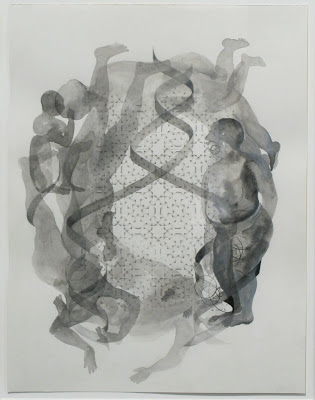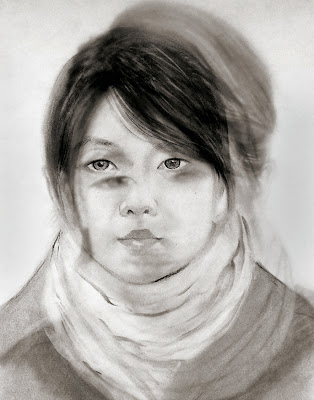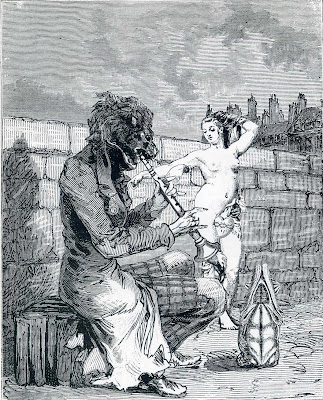Rubens Ghenov
Adjunct Professor
1511
- Foundation Drawing
Tyler School of Art / Temple University
rghenov@temple.edu
Office: Suite 230O
Available: mon-wed: 5:15 – 6:00pm
Course # 1511 / Section 008/011
Course Reference # 6286 / 6037
Class meets: 008: 12:00 – 2:30 In: 230E
011: 2:40 – 5:10 In: 230E
Course
Description:
An
introduction to foundation drawing course that concentrates on developing basic
formal, conceptual, and technical skills. The course examines varied media in
the study of the figure, geometric composition, and landscape. A discussion of
technology in studio practice is part of all Foundation courses. NOTE:
Enrollment is limited to students accepted for Tyler BFA programs.
Course
Objectives:
Foundation
Drawing is an introduction to drawing as a basic practice that underlies all
visual art making. In this course, students will investigate the basic elements
of visual language (including mark, line, gesture, contour, edge, value, form,
volume, mass, density, proportion, scale, linear perspective, order, pattern,
rhythm, texture, and the illusion of space) through a series of observations,
exercises, and projects. Emphasis is placed on drawing from observation.
Computers and the role of technology in observation and visual research will be
discussed. Foundation Drawing 1511 approaches these investigations in value
(the expressive and spatial aspects of color are discussed in Foundation
Drawing 1512).
Instructor’s
Statement
Whether an artwork be conceptual, commercial, abstract,
representational, political or site specific, drawing is basic in birthing
ideas visually. Its fluidity gives abstract concepts a body in which limbs are
linked together. Though drawing is known to occupy much of the behind the
scenes work, it is also revered as some of the most interesting artworks of the
past as well as the present. More and more, drawing has acquired a lot of
attention today due to its flexibility with other media, its open and unedited
quality and exploration of a medium that has been sensed as inferior. Drawing
is political and prophetic, having the potential to recreate, transform and
recontextualize art and thus history. Throughout this course students will be
introduced to traditional and unconventional ways of drawing that will help
them shape their practice and ideas as artists as well as serve them to explore
various media. We will look at art history both past and contemporary and learn
how to look at work analytically via critical discussions, readings and films.
Being that drawing is a language that speaks in its own syntax, in this class
we will spend lots of time articulating our ideas visually and verbally, in
order to better understand media, the coordination of eye and hand, techniques,
space, light, proportion, composition amidst a plethora of others. Without
rigor, drawing is an activity that does not avail much. It is imperative that
an artist is diligent and absorbed with much drawing, for any development will
only come through painstaking rigor. Drawing is part looking, experimenting,
erasing and drawing. It is training your hands to draw what you actually see
and your eyes to observe intimately and meticulously, but it is also learning
to draw what you want others to see convincingly.
Students
will develop:
Your
evaluation will depend on your performance toward the following objectives
o
The
depth of the observation skills
o
The
ability to create a fully-realized drawing
o
The
ability to measure and find proportion using hand/eye coordination
o
The
ability to think, reflect, and use time in concert with their hands and eyes in
drawing
o
The
ability to experiment with and use materials to their full potential
o
Verbal
and critical skills applicable to the making and evaluation of drawing
o
Skills
using drawing to generate ideas
GENERAL
INFORMATION
Disability
Disclosure
Any
student who has a need for accommodation based on the impact of a disability
should contact each instructor privately to discuss the specific situation as
soon as possible. Contact Disability Resources and Services at 215.204.1280 at
100 Ritter Annex to coordinate accommodations for students with documented
disabilities. Students must
present appropriate paperwork in order to receive special accommodations.
Accommodations are limited to those documented by the office of Disability
Resources and Services and presented in an official letter to the instructor.
Information
on Cancellation of Classes due to Inclement Weather
Information
about class closures is prominently displayed on the Temple University homepage
(www.temple.edu). The University
participates with the City of Philadelphia and local radio stations such as KYW
(1060-AM), WDAS (1480-AM, 105,3-FM), WIOQ (102.1-FM), WUSL (98.9-FM) and WPEN
(950-AM), which broadcast code numbers indicating when classes are closed
because of snow or other inclement weather.
373 Day
Class Cancellation (classes that begin before 4pm)
2353 Evening
Class Cancellation (classes that begin at or after 4pm)
The
most accurate and up-to-date information on class cancellations can be obtained
by calling the University’s hotline at 215 204 1975, by listening to Temple’s
radio station, WRTI 90.1-FM, or by referring to Temple’s website at:
www.temple.edu.
REQUIREMENTS
AND EXPECTATIONS
Attendance
Policy
You
must attend every class. Absences will negatively affect your grade. When
absent, you must contact your teacher to find out what occurred in classes
you’ve missed. Work should be
completed upon your return to class.
Excused
absences
For
medical reasons and/or family emergencies only and require documentation;
medical absences require note from a doctor or nurse (use Temple Health
Services). You are allowed a
maximum of three excused absences after which, you must see the Academic
Advisor to withdraw from the course.
Unexcused
Absences
One:
Deficiency notice will be given to the student.
Two:
Deficiency notice + drop of one letter in your final grade.
Three: Three
absences are grounds for failure of the course.
Withdrawing
from a Class
Please
review the Temple University policy of Withdrawal from Classes. You are
financially responsible for classes from which you withdraw. Withdrawing from a
class may greatly delay your time to graduation. Please consult with an
academic advisor before withdrawing from a course. See the University policy
at:
http://policies.temple.edu/getdoc.asp?policy_no=02.10.14
Lateness
Policy
Arriving
any time after class is scheduled to begin is considered late. Even if you are
late, you should always come to class. It is better for you to be present for
some of the information than to miss an entire class.
Lateness
is recorded:
2 latenesses = 1 absence. It is
possible to fail a course based upon lateness alone. If you have a class that ends when another begins, let both
teachers know so they are aware of your individual situation.
EVALUATION
Final grades in all Foundation classes are
awarded based on the criteria described in each course’s rubric. The detailed
rubrics for all Foundation classes can be found at https://spreadsheets.google.com/pub?key=0AvrR4TkNVQpadHVNeENISXNGOEo1R1FIYWRXRVZ1Unc&hl=en&gid=0
Stipulations:
Coming to class prepared means being on time, bringing all
of the materials for class unless I make specific changes, hanging work up on
critique days at the beginning of class, being ready to verbally participate in
either a critique, watching and discussing a film and physically working in
class.
Late and incomplete work will lose one grade.
In either class or home assignments you will be asked to
work to your full potential in which grades will demonstrate accordingly.
Grades will not be given to each project. A group critique
at midterm will look at people’s work up to that time and a letter grade will
then be posted on Blackboard. I will only let you know your standing grade wise
if indeed you are deficient in assignments and/or attendance.
It is expected that you give yourself ample time to work in
drawing outside of class. Besides class work you are expected to do home
assignments that require a lot of hard work. The work assigned for home will be
discussed the next class during our group critiques. Assignments not completed
or unfinished will lay heavy at grading time.
Plan out the times you can come to the studio outside of
class for projects due to the fact that they are not available 24 hours.
You are also expected to keep a sketch book that will come
into our conversation during crits and which I will periodically be looking at
during the semester. Please purchase one for the beginning of the semester.
During the semester I will be assessing your participation
in class in the following ways:
. Verbal participation during critiques
. Level of commitment to projects both in and outside of
class (including sketchbook)
. Paying attention to lectures and films
Foundation Lecture Series is a component of your first
year. Presentations begin at 10:30 am in the Auditorium, Room B04. During the
first semester, lectures focus on the studio as it is now used by artists and
designers.
Foundation
SketchBook
All
Foundation classes participate in the Foundation SketchBook, a journal of the
first year experience. You must complete the assignments for each course as
part of your final evaluation. Sketchbooks will be bound in 2D Foundation
Principles.
Deadlines
and other information
Deadlines and critiques are very important for the class
providing continuity and the flows of ideas to be linked.
If you miss a class (critique, assignments, film, lectures)
you must bring a doctor’s note in order to be excused. As stated previously, work
should then be completed upon return to class. Critiques and lectures cannot be
refabricated thus it is vital that you make it to class every week. In the case a
student misses a film, he/she needs to watch it in his/her own time before the next week
of class as they relate to specific assignments. Without watching it, the student will
not be able to complete the assignment.
Academic
Progress in Lower Division Courses
As
part of a University program to alert students to problems with performance,
your progress in each course will be assessed during the 5th week of classes.
If you receive notice of unsatisfactory performance, you must meet with your
teacher to discuss your situation.
Academic
Integrity
The
Student Code of Conduct considers the following to be a violation of academic
integrity:
1. Academic dishonesty and impropriety, including
plagiarism, fabrication and academic cheating. This includes helping, procuring
or encouraging another person to engage in academic misconduct;
2 Interfering with or disrupting the conduct of
classes or any other normal or regular activities of the University
POLICY ON
PLAGIARISM, ACADEMIC CHEATING AND DISHONESTY
Original
Work
All
work submitted for a class must have been made by you, specifically for the
course it has been submitted to. A specific project may not be submitted in
multiple classes. Submitting work not generated for a specific course
constitutes academic dishonesty. The penalty for academic dishonesty is an
automatic "F" in the course in which the offense is committed and a
report to the Dean. Subsequent offenses are referred to the University
Disciplinary Committee.
Week
by Week Schedule of Class Events:
syllabus
is subject to change
Week
1
Monday,
August 26
(Intro/Syllabus/Questionnarie)
Wednesday,
August 28
Watch
the film “The Man who Tread on the Tiger’s Trail”
First
Assignment: Drawing based on film prompt
Week
2
Monday,
September 2: NO CLASSES – LABOR DAY
Wednesday,
September 4:
CRITIQUE:
First Assignment
Week
3
Monday,
September 9: LAST DAY TO DROP A
COURSE
Folded
Paper Still Life (Composition, Mark, Scale, Value)
Wednesday,
September 11
Folded
Paper (Composition, Mark, Scale, Value)
Second
Assignment: Folded Paper with one object
Week
4
Monday,
September 16
COMPUTER
LAB
Wednesday,
September 18
COMPUTER
LAB
Week
5
Monday,
September 23
CRITIQUE:
Second Assignment
Wednesday,
September 25
Still
Life 1
Third
Assignment: Still Life (vine charcoal on a 24x36 paper)
Read
Georges Perec’s “Life, A User’s Manual” Chapter 2, Beaumont 1
Week
6
Monday,
September 30
Still
Life 2
Wednesday,
October 2
CRITIQUE:
Third Assignment
Week
7
Monday,
October 7
Figure
Drawing (Blind Contour, Opposite Hand, Foot)
Fourth
Assignment: 10 Blind Contour drawings on a 3x3 ft paper with woodless graphite
pencil, overlapping each other
Wednesday,
October 9
Figure
Drawing (Line/woodless)
Week8
Monday,
October 14
Figure
Drawing (Layer)
Fifth
Assignment: Two figures in a room
Wednesday,
October 16
Figure
Drawing (Reductive)
Week
9
Monday,
October 21
Figure
Drawing (remix)
Tuesday,
October 22: LAST DAY TO WITHDRAW
FROM A COURSE
Wednesday,
October 23: Registration for
Spring Semester Begins
CRITIQUE:
Fifth Assignment
Week
10
Monday,
October 28
Lecture
on Final Project
Final
Project
Wednesday,
October 30
Perspective
Drawing
Week
11
Monday,
November 4
FIRST
CRITIQUE ON FINAL
Wednesday,
November 6
Figure
Drawing with Still Life 1
Week
12
Monday,
November 18
Figure
Drawing with Still Life 2
Wednesday,
November 20
Figure
Drawing Collab
Week
13
Monday,
November 25
SECOND
CRITIQUE ON FINAL
Tuesday,
November 26: Calendar adjustment for Thanksgiving: Attend class as if it were
THURSDAY
Wednesday,
November 27: Calendar adjustment for Thanksgiving: Attend class as if it were
FRIDAY
Thursday,
November 29 – Sunday, December 1: Thanksgiving Recess – Studios and Shops are
CLOSED
Week
14
Monday,
December 2
FIRST
HALF FINAL CRITIQUE
Wednesday
December 4 Last Day of classes – studios and shops close at 5pm
SECOND
HALF FINAL CRITIQUE
Thursday,
December 5: Department-wide Clean up – ATTENDANCE MANDATORY
•
BFA Freshmen 11 – 1
•
VS/AE Freshmen 1 -3
*
Final Exam schedules are set by Temple University, Tyler School of Art, and
cannot be altered.
Classes must meet at designated
times only!
REQUIRED
MATERIALS AND TOOLS FOR 1511-Drawing
1
masonite drawing board 18 x 24" with clips
|
|
1
pad newsprint 18 x 24" (100 sheets)
|
|
1
18 x 24" tracing pad
|
|
2
18 x 24 pads of Strathmore Medium Drawing Paper
|
|
2
each drawing pencils: 8B, 6B, 4B, 2B, HB, 2H
|
|
1
roll 36” x 10 yard Drawing paper
|
Strathmore
400 or similar recommended
|
1
hand-held steel pencil sharpener
|
|
2
each Conte pencils: Black, white, sanguine
|
|
Conte
Crayons: 6 Black, 4 white 4 sepia
|
|
Graphite
Sticks - 4 (soft)
|
|
1
box compressed charcoal (soft)
|
|
1
box soft vine charcoal
|
|
2
charcoal pencils
|
|
2
white plastic erasers
|
|
1
chamois cloth
|
|
1
blending stump
|
|
3
kneaded erasers
|
|
1
plastic pen eraser
|
|
1
large portfolio
|
|
1
bristle or hog hair brush, 1” flat
|
Also
for 2D
|
1
bottle black India ink, 8 oz. minimum
|
Also
for 2D
|
1
roll masking tape or white drafting tape
|
Also
for 2D
|
1
sable or imitation sable brush, 1” flat
|
Also
for 2D
|
Tube
43 x 2.5 inches
|
|
Come to class with stocked tackle box each week!
This includes all drawing supplies. Arriving without your materials is
equivalent to being tardy (and you’ll have to beg)
The
course fee for this class provides the following:
o
Model
Fees
These
materials are intended to demonstrate techniques and provide sufficient
resources for basic Foundation Drawing investigations. It is likely that
students will wish to make more ambitious projects than can be paid for with
the budgeted fees, and each student is responsible for obtaining materials for
such work.
























